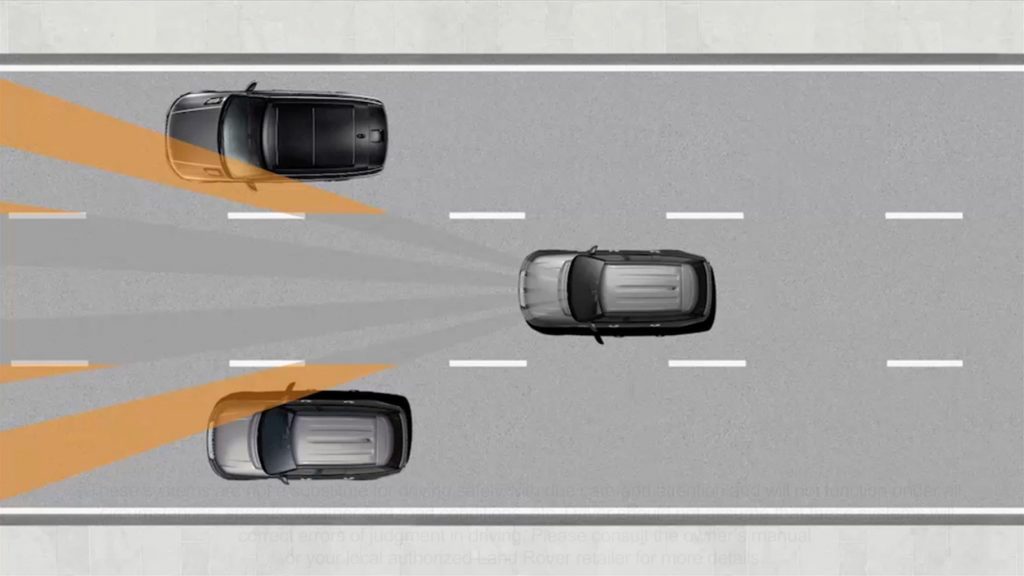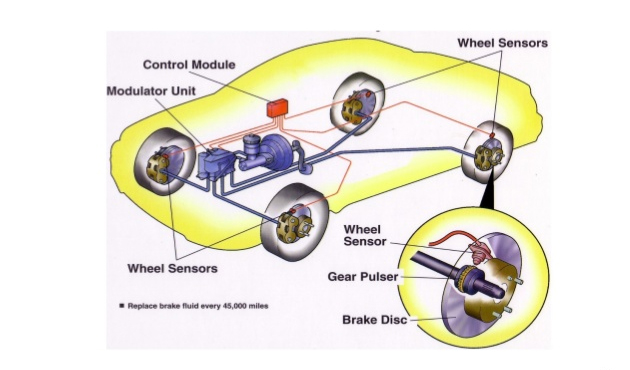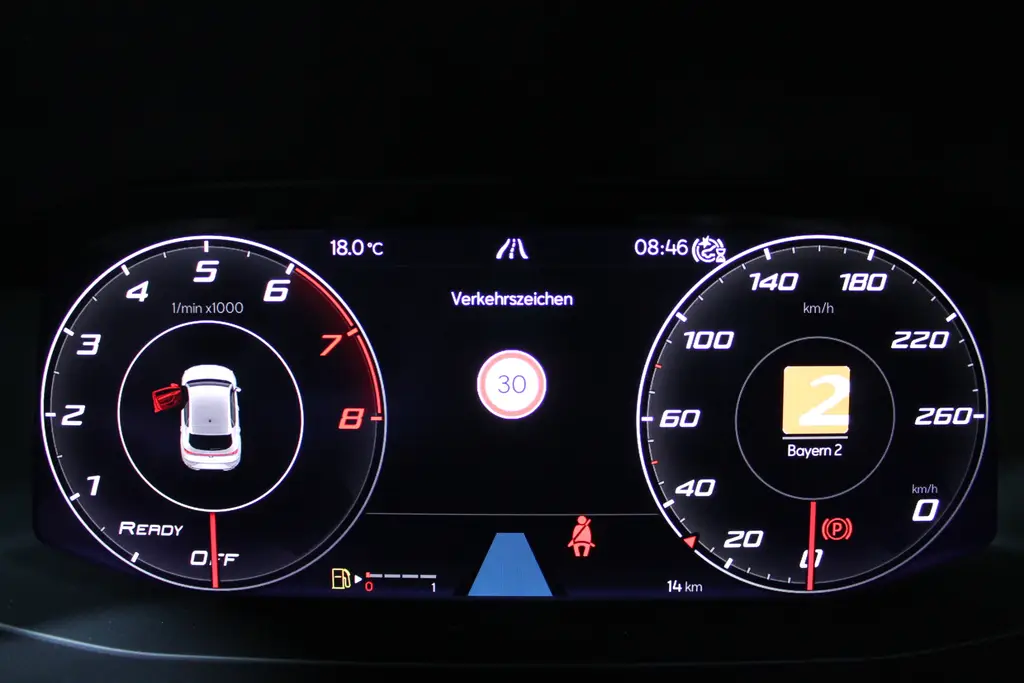Mazda vehicles are designed with advanced safety technologies to provide a secure and enjoyable driving experience. One of the key safety features in modern Mazda models is Forward Collision Warning (FCW), a system that plays a crucial role in preventing accidents by alerting drivers to potential collisions. The FCW system utilizes a variety of sensors and cameras to detect objects and vehicles ahead, warning the driver when they are approaching too quickly. This early warning helps drivers take timely action, reducing the risk of collisions and ensuring better safety on the road. In this article, we will explore how FCW works in Mazda vehicles, its benefits, and why it is an essential feature for all drivers.
What is Forward Collision Warning (FCW)?
Forward Collision Warning (FCW) is a safety feature designed to warn drivers about the possibility of an impending collision with a vehicle or object in front of their car. The system uses radar sensors, cameras, and advanced algorithms to monitor the road ahead, detecting any potential obstacles. When the system determines that the vehicle is getting too close to another vehicle or object, it alerts the driver with visual or audible warnings, giving them a chance to take corrective actions, such as braking or steering away from the obstacle.

FCW is a proactive system that operates independently of the driver’s actions, providing an extra layer of security to help avoid accidents caused by driver inattention, sudden stops, or poor road conditions. In many Mazda vehicles, FCW is paired with other advanced driver assistance systems (ADAS), such as Automatic Emergency Braking (AEB) and Lane Keep Assist (LKA), to enhance overall safety and reduce the risk of collisions.
How Does Forward Collision Warning (FCW) Work in Mazda Vehicles?
Mazda’s Forward Collision Warning system operates using a combination of sensors, cameras, and radar technology. These components work together to detect the distance and relative speed between your vehicle and other vehicles or objects in front. Here’s how it works:
1. Radar Sensors and Cameras
Mazda vehicles are equipped with radar sensors located in the front bumper and cameras mounted near the rearview mirror. The radar sensors continuously scan the road ahead, measuring the distance between your car and other vehicles or obstacles. The camera helps the system recognize and classify objects, such as other vehicles, pedestrians, or debris on the road.
2. Detection and Monitoring
The FCW system constantly monitors the road ahead for any potential hazards. If the system detects a vehicle or obstacle in front of your Mazda, it calculates the speed at which your vehicle is approaching the object. If the system determines that there is a risk of a collision based on the relative speed and distance, it triggers an alert to warn the driver.
3. Audible and Visual Alerts
When the Forward Collision Warning system detects a potential collision, it provides an audible warning (a series of beeps) and may also display a visual warning on the car’s display screen. The frequency of the beeping increases as the vehicle gets closer to the object, signaling the driver to take action. In some models, the system may also display a red warning light or icon on the dashboard, providing an additional visual cue for the driver to respond.
4. Integrated with Other Safety Systems
In Mazda vehicles, FCW is often integrated with other driver assistance technologies, such as Automatic Emergency Braking (AEB). If the driver does not react to the FCW alert in time, the AEB system can automatically apply the brakes to reduce the severity of the collision or prevent it entirely. This integration helps enhance overall safety by providing multiple layers of protection in potentially dangerous situations.
Benefits of Forward Collision Warning in Mazda Vehicles
Mazda’s Forward Collision Warning system provides a wide range of benefits, making it an essential safety feature for every driver. Here are some of the key advantages:
1. Accident Prevention
The primary benefit of FCW is its ability to help prevent accidents by alerting drivers to potential collisions before they occur. This system is especially useful in situations where a driver may not have enough time to react to a sudden stop or unexpected obstacle. By providing early warnings, FCW gives drivers the chance to take evasive actions, such as braking or steering, to avoid or reduce the impact of a collision.
For example, when driving in heavy traffic, FCW can detect when a vehicle ahead suddenly brakes or slows down, alerting the driver to the change in traffic conditions. This helps the driver respond quickly, reducing the risk of rear-end collisions.
2. Enhanced Driver Awareness
FCW improves driver awareness, especially in situations where a driver may not be fully focused on the road. In busy traffic or on long drives, drivers may become distracted, fatigued, or miss important cues about potential hazards. The FCW system acts as an extra set of eyes, constantly monitoring the road for potential dangers and providing alerts when needed.
This enhanced awareness helps drivers stay focused on the road and react promptly to any changing conditions, reducing the likelihood of accidents caused by driver inattention.
3. Reduced Severity of Collisions
In situations where a collision is unavoidable, the Forward Collision Warning system can help reduce the severity of the crash. By alerting the driver in advance, the system gives the driver the opportunity to apply the brakes and slow down the vehicle before impact. In some cases, FCW is paired with Automatic Emergency Braking (AEB), which can apply the brakes if the driver does not react quickly enough. This dual system can help mitigate the force of the collision, minimizing damage to the vehicle and reducing the risk of injury.
4. Improved Safety for Pedestrians
While FCW is primarily focused on detecting other vehicles, some advanced systems also include pedestrian detection capabilities. This additional feature can alert the driver to pedestrians crossing the road or walking near the vehicle. In some Mazda models, the system can even automatically apply the brakes to prevent a collision with a pedestrian. This extra layer of protection helps ensure the safety of both the driver and pedestrians.
5. Increased Confidence Behind the Wheel
With the added protection provided by FCW, Mazda drivers can feel more confident behind the wheel. The system reduces the stress of driving, especially in situations where the driver may be uncertain about their ability to react in time. Whether navigating through heavy traffic, driving at high speeds on the highway, or maneuvering through crowded parking lots, FCW provides peace of mind, knowing that the system is actively working to prevent potential collisions.
Forward Collision Warning vs. Automatic Emergency Braking (AEB)
It’s important to note that while Forward Collision Warning (FCW) is an essential safety feature, it is often paired with Automatic Emergency Braking (AEB) in Mazda vehicles. While FCW provides an alert to the driver about a potential collision, AEB takes things a step further by automatically applying the brakes if the driver fails to act in time.
The combination of these two systems enhances safety by reducing the likelihood of a collision and minimizing the impact of a crash. FCW gives the driver a chance to respond, while AEB ensures that the vehicle takes corrective action if the driver doesn’t react quickly enough.
How to Use Forward Collision Warning in Mazda Vehicles
Using Mazda’s Forward Collision Warning system is simple and intuitive. In most Mazda vehicles, the FCW system is automatically activated when the vehicle is started and is ready to use when driving. Drivers do not need to manually engage the system, as it works seamlessly in the background. However, if desired, the system can typically be adjusted or turned off through the vehicle’s settings menu.

To make the most of FCW, it’s essential for drivers to remain attentive to the road and respond promptly to any alerts. The system works best when drivers are focused on their surroundings and aware of their vehicle’s capabilities.
Conclusion: Why Forward Collision Warning is Essential in Mazda Vehicles
Forward Collision Warning (FCW) is a critical safety feature that enhances the driving experience by providing proactive alerts to help prevent accidents. Mazda’s FCW system utilizes advanced radar, cameras, and sensors to detect potential hazards and warn the driver in time to take action. Whether driving in heavy traffic, on highways, or in urban environments, FCW provides added safety and peace of mind, reducing the risk of collisions and improving overall driver awareness.
Combined with other safety features such as Automatic Emergency Braking and Lane Keep Assist, FCW offers a comprehensive approach to road safety, making Mazda vehicles a top choice for those seeking reliability and advanced technology. By integrating FCW into their vehicles, Mazda ensures that drivers and passengers are protected in a variety of driving scenarios, making every journey safer and more secure.

Leave a Reply